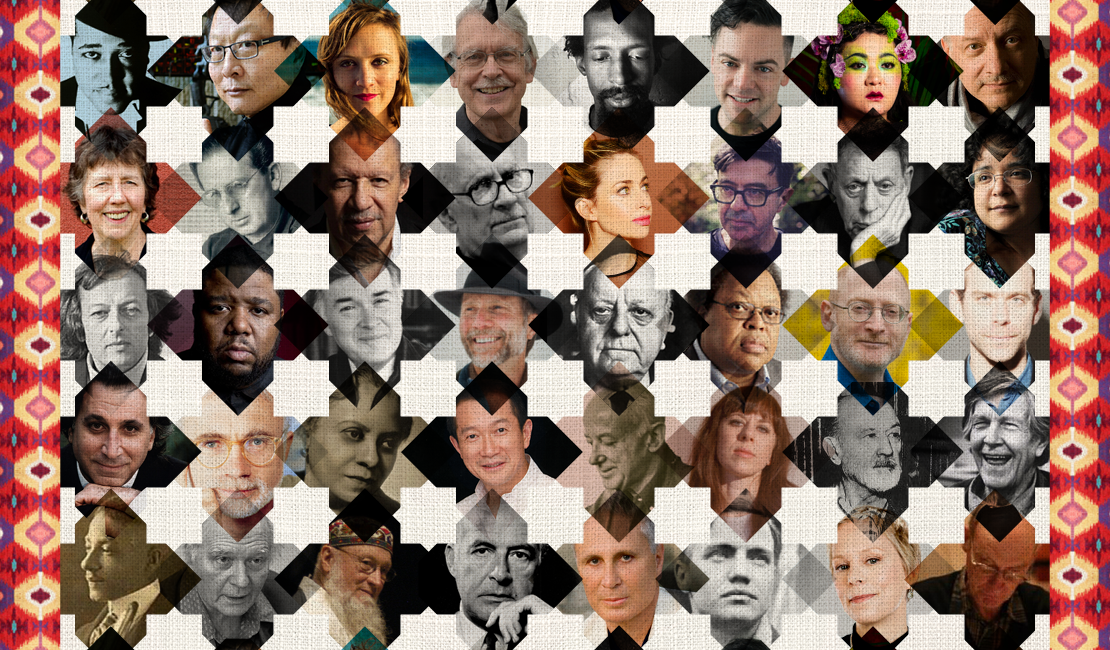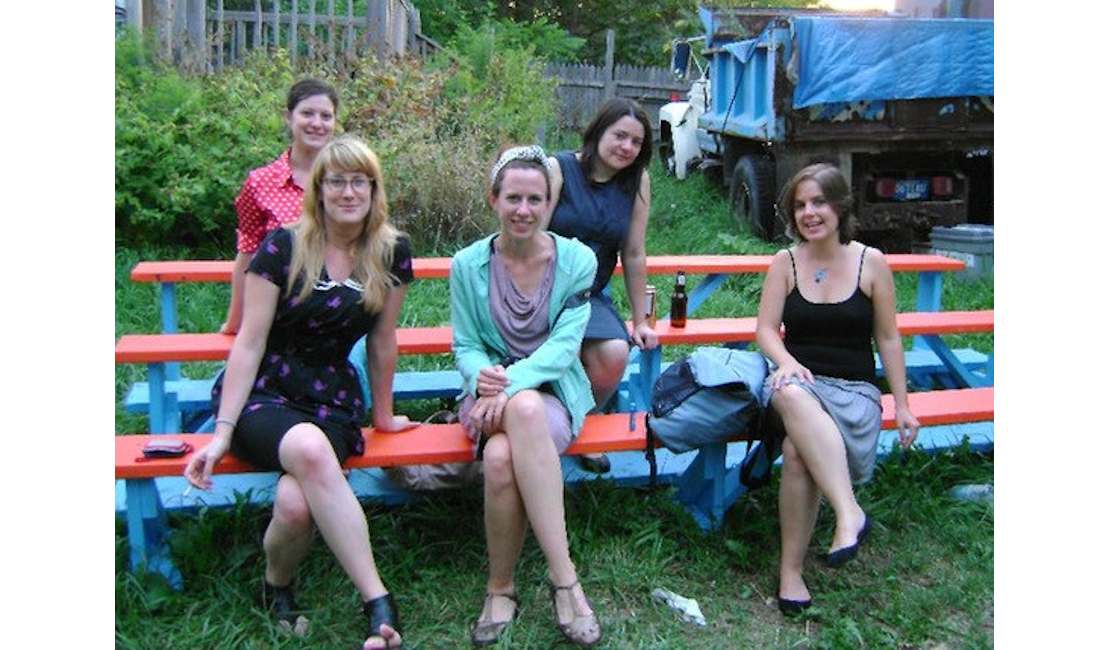Independent Repertoire: American Cityscapes and Landscapes

Numerous composers have drawn inspiration both from the United States’ natural beauty and the vibrant character of its cities. From iconic neighborhoods to breathtaking views, rural agrarian life to industrial skylines, the following works evoke this country’s distinctive landscapes through sound.
Duke Ellington, Harlem (1950)
As one of the most important composers, pianists, and bandleaders of all time, Duke Ellington brought the ethos and language of jazz to a broad array of musical arenas, including the symphony orchestra. Though many of Ellington’s best-known works are shorter pieces, his longer-form works effectively build on the infectious energy and expressive range of his song forms. Harlem is one such work, described by Ellington as “a little Sunday morning visit up Seventh Avenue starting at 110th Street...you may see a parade go by, you may see a funeral go by, you may see a hip chick standing on the corner on a lamppost, and you may recognize a time when we’re making our social significance demands.” Harlem provides a quintessential example of how Ellington worked as a subtle but pivotal racial activist through his life and music; it portrays the vivid lives of the “beautiful people” who inhabited 1950s Harlem, bringing to the fore their humanity and cultural contributions to New York City life.
Aaron Jay Kernis, Earth (2021)
In Earth, Aaron Jay Kernis takes on the growing threat of the climate crisis, which he calls “the most important issue of our time.” Scored for tenor and chamber orchestra, Earth plays on the final “Farewell” movement of Mahler’s beloved song cycle Das Lied von Der Erde (The Song of the Earth). It features text by contemporary poet and sustainable farmer Kai Hoffman-Krull, whose delicate text paints a moving picture of an American farmer and the land on which he works, lives, and raises his family.
Missy Mazzoli, River Rouge Transfiguration (2013)
Missy Mazzoli’s River Rouge Transfiguration displays an obvious affection for the city of Detroit, a place of singular inventiveness and towering resilience. Mazzoli first fell in love with the city while on tour with her band Victoire; listening to music from and reading about Detroit, she was struck by how often its partisans described the city with “a kind of religious awe,” with factories transformed into cathedrals and altars in their eyes. In River Rouge Transfiguration, an image of the River Rouge Plant as a huge pipe organ drives “the transformation of grit and noise […] into something massive, resonant, and unexpected.”

Victoire in Detroit (Missy Mazzoli)
Olivier Messiaen, Des Canyons aux Étoiles (1974)
French composer Olivier Messiaen was drawn to the United States’ astonishing natural beauty. He was particularly captivated by the colorful landscape of Utah’s Bryce Canyon, which offered a feast for his sound-color synesthesia. It was also rich with the birdsong he had long incorporated into his melodic language. Commissioned by famed arts patron Alice Tully to commemorate the bicentennial of American independence in 1976, Des Canyons aux Étoiles offers a keen and admiring outsider’s view of a unique American landscape. Incorporating four soloists (piano, horn, xylorimba, and glockenspiel) alongside unusually large and varied wind and percussion sections, the piece offers a range of orchestral colors to evoke the vibrance of Bryce’s terrain.
Ellen Reid, West Coast Sky Eternal (2023)
Ellen Reid calls her string orchestra work West Coast Sky Eternal “a study in perspective.” It begins with a “wide-angle panorama” and breathtaking view of the California sky, then zooms in on “the choppy, workaday business of living” that “pulls our attention earthward.” Eventually, “the raw joy of life and death finally have us looking upward, back to the high place, where the frenetic movements of humanity resolve into calm order […].” This delicate interplay between human life and the natural world is sketched in expressive solo moments, echoed by rich beds of quasi-electronic delays, pizzicato lines that skitter into nothingness, and poignant unisons that bloom into a sunset of harmony.
Gabriela Lena Frank, Contested Eden (2021)
Gabriela Lena Frank addresses the terrifying effects of the climate crisis in Contested Eden, which focuses on the fierce Californian wildfires that took place between 2016 and 2020. The destruction wreaked on her “beloved home state” begot Frank’s commitment to lifestyle changes that combat such devastation, and this sincerity of engagement is also clear in the music of Contested Eden. Frank calls the first movement “Canto para California,” an “original secular psalm,” while the second movement “in extremis” focuses on the Herculean perseverance of daily life under the threat of destruction. Despite the heartbreak Frank evokes, she ends the work on a note of hope. A nod to the opening secular psalm, shimmering tremolo strings, and a delicate ascending wind line represent “an optimistic embrace of challenges to come.”

Gabriela Lena Frank at her farm in California (Gabriela Lena Frank)
John Luther Adams, The Light that Fills the World (2000)
Having spent decades as a resident of Alaska, John Luther Adams writes music that evokes the might of the natural world and pleads for greater efforts to conserve it. In The Light that Fills the World, the composer renders the Alaskan winter by way of Mark Rothko and Morton Feldman: “For much of the year, the world in which I live is a vast, white canvas...I was struck by the equivalence between the view out of my window and Mark Rothko's use of white in his paintings. The exquisite colors on the snow and those in Rothko's translucent fields suggested to me broad diatonic washes suffused with slowly changing chromatic harmonies. Slowly, faintly, I began to hear a new music stripped to its most essential elements: harmony, timbre and texture, suspended in what Morton Feldman called ‘time undisturbed’...like sitting in the same place as the wind and weather, the light and shadows slowly change."
Explore American Themes in Classical Music
American Cityscapes and Landscapes | American History and Politics | Engaging with American Musical Traditions | Inspired by American Art and Writing | American Minimalism | A Land of Immigrants: Perspectives from Abroad | American Optimism — Grappling with Dark and Light
